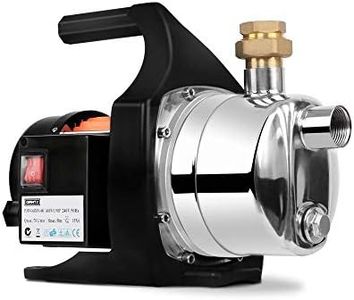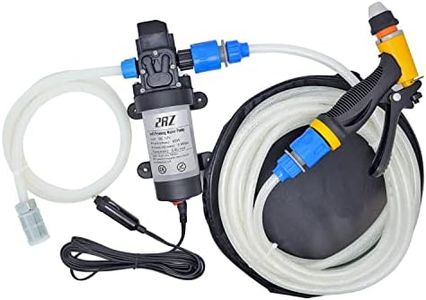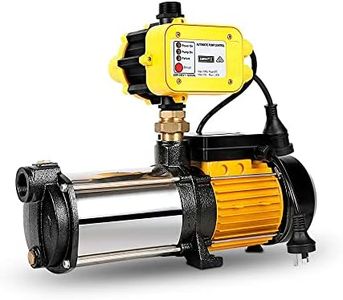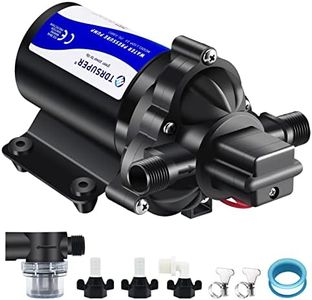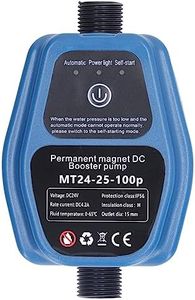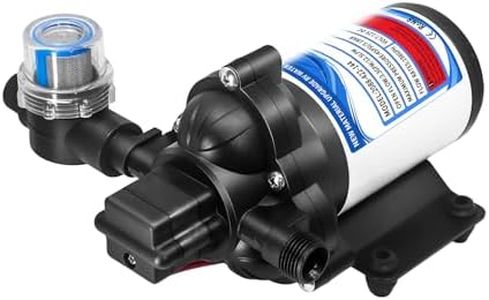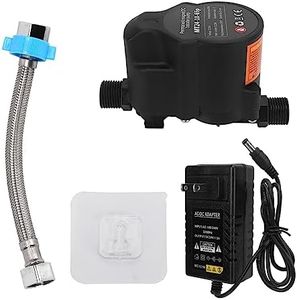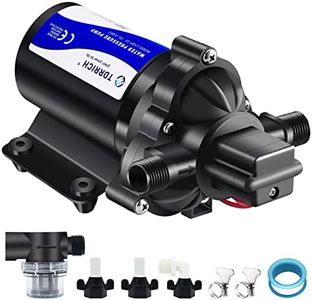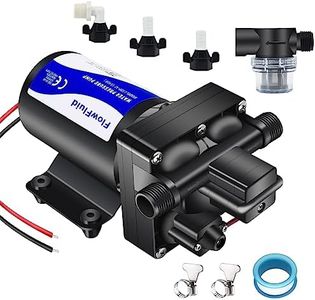We Use CookiesWe use cookies to enhance the security, performance,
functionality and for analytical and promotional activities. By continuing to browse this site you
are agreeing to our privacy policy
10 Best Water Booster Pump For Home
From leading brands and best sellers available on the web.Buying Guide for the Best Water Booster Pump For Home
Choosing the right water booster pump for your home can make a noticeable difference in your daily comfort, especially if you're experiencing low or inconsistent water pressure. The ideal pump depends on your home's size, the number of bathrooms and fixtures, and the water use habits of your household. It’s important to understand a few key specifications so you can match the pump’s performance to your specific needs, ensuring consistent water flow for all your showers, taps, and appliances.Flow RateFlow rate measures how much water the pump can move in a given time, usually expressed in liters per minute (LPM) or gallons per minute (GPM). A higher flow rate means more water is available at various outlets at the same time, which is important if several people use water simultaneously (like multiple showers or taps). For a small household with one or two bathrooms, a lower flow rate is usually enough. For larger homes with more bathrooms or demands (such as garden irrigation or washing machines running at the same time), a higher flow rate is better. Consider all the water fixtures you use at the same time and pick a pump with a flow rate that can meet that demand without overdoing it, as excessive flow can be wasteful.
Pressure Boost (Head Height)Pressure boost, often referred to as head height, is the maximum height the pump can push water upwards, usually given in meters or feet. This is crucial if your water needs to reach upper floors or if there’s a significant elevation difference between your water tank and where the water is used. For single-story homes or ground-floor use, a lower head height is fine. For multi-story homes or if you want strong pressure on upper floors, select a pump with a higher head height. Consider measuring the height from your water source to the highest point where water is needed to guide your choice.
Pump Type (Centrifugal vs. Multistage)Booster pumps come mainly in two types: centrifugal and multistage. Centrifugal pumps are generally simpler and suitable for shorter distances or lower pressure needs. Multistage pumps are more complex, offering higher pressures and are ideal for taller buildings or when strong, even pressure is required across many outlets. If your home is small and single-level, a centrifugal pump often suffices. If you have several floors or higher pressure requirements, a multistage pump is better suited.
Noise LevelNoise level is how much sound the pump makes when it's running, usually measured in decibels (dB). Pumps installed close to living spaces or bedrooms can be annoying if they are loud, so consider where you'll place the pump. For indoor or near-bedroom installation, look for pumps designed to run quietly. In less sensitive areas, noise may not be as important, so focus on other specs.
Control Features (Automatic vs. Manual)Some pumps turn on and off automatically based on water demand, while others require manual operation. Automatic pumps are more convenient as they only work when water is needed, saving energy and minimizing wear. Manual pumps need to be turned on and off by the user and are less user-friendly but can be simpler to maintain. Choose automatic control if you want a hassle-free experience and consistent water pressure throughout your house.
Build Material and DurabilityThe build material of a pump (such as stainless steel, brass, or plastic) affects its durability and resistance to corrosion, especially if your water is hard or contains impurities. Stainless steel and brass are more durable and better for long-term use, especially if the pump is exposed to the elements or harsh water. Plastic components can be suitable for indoor use and softer water but may not last as long. Consider your water quality and installation site to select the most appropriate material.

